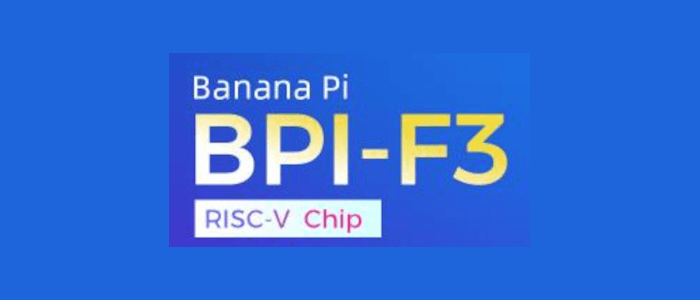This is a multi-part blog looking at the Banana Pi BPI-F3 Single Board Computer running Linux.
In this article I benchmark the Banana Pi BPI-F3 and compare it to other single board computers as well as an N100 Mini PC. The tests are run using the Phoronix Test Suite.
What’s the rationale of benchmarking the Banana Pi BPI-F3 against an N100? Simple! This series is looking at using the BPI-F3 as a desktop machine, and the N100 is a hugely popular Intel processor found in many low-cost mini PCs.
Normally when I benchmark a machine, I look at benchmarks that focus on system performance, processor, memory/graphics, disk/WiFi. But here I’m going to focus mainly on CPU performance. The previous article in this series benchmarks the eMMC flash (as well as a bog-standard microSD card). I’ve just got a new batch of microSD cards so I’m now using one of them with the Banana Pi.
Processor benchmarks
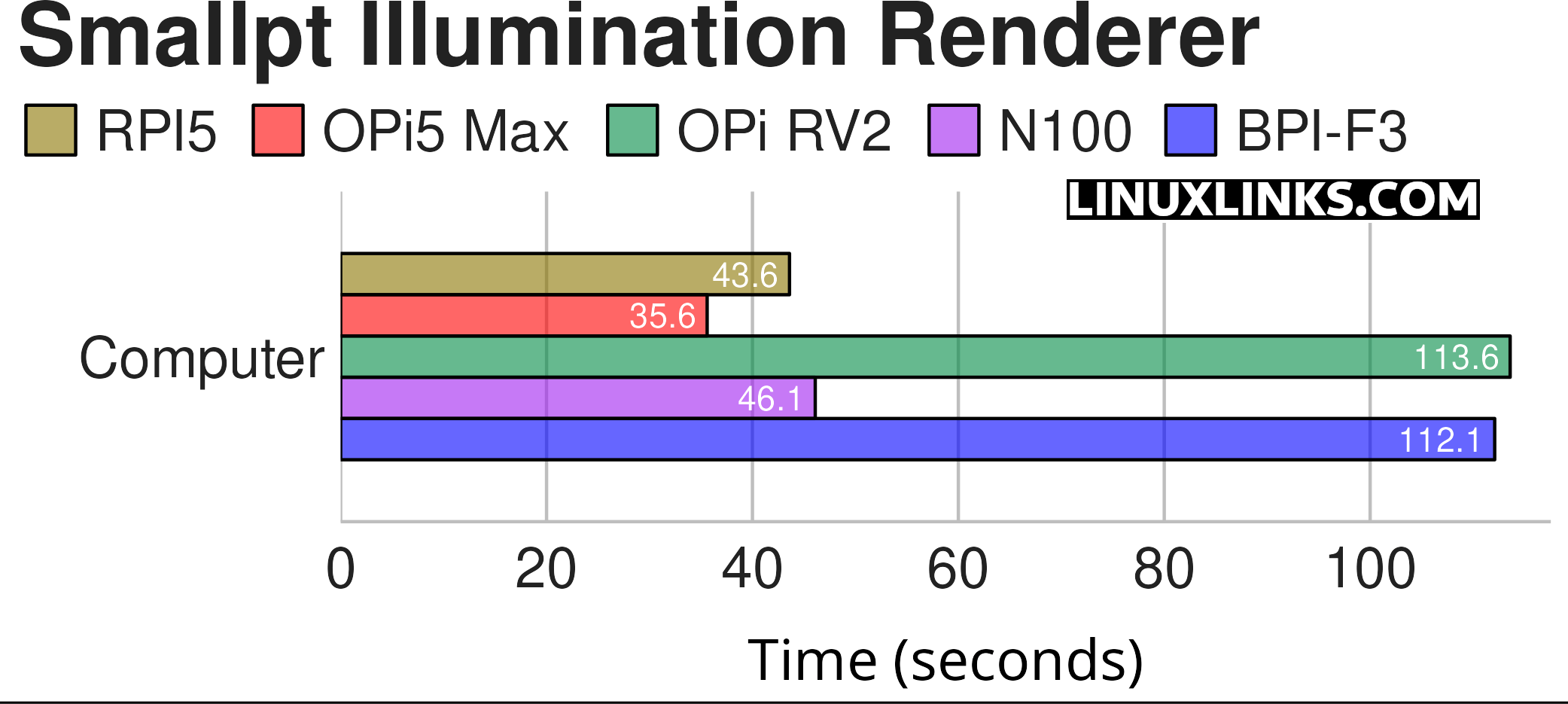
$ phoronix-test-suite benchmark smallpt
Smallpt is a C++ global illumination renderer written in less than 100 lines of code. Global illumination is done via unbiased Monte Carlo path tracing and there is multi-threading support via the OpenMP library.
With this benchmark, a shorter time indicates better performance. The Orange Pi 5 Max comfortably beats both the Raspberry Pi 5 and Intel N100. While the RISC-V Orange Pi RV2 and the Banana Pi BPI-F3 each have 8 cores (and this test uses all the cores) they are not as performant. The Banana Pi BPI-F3 completes the benchmark slightly quicker than the Orange Pi RV2 RISC-V counterpart. And bear in mind RISC-V is still maturing compared to ARM and Intel.
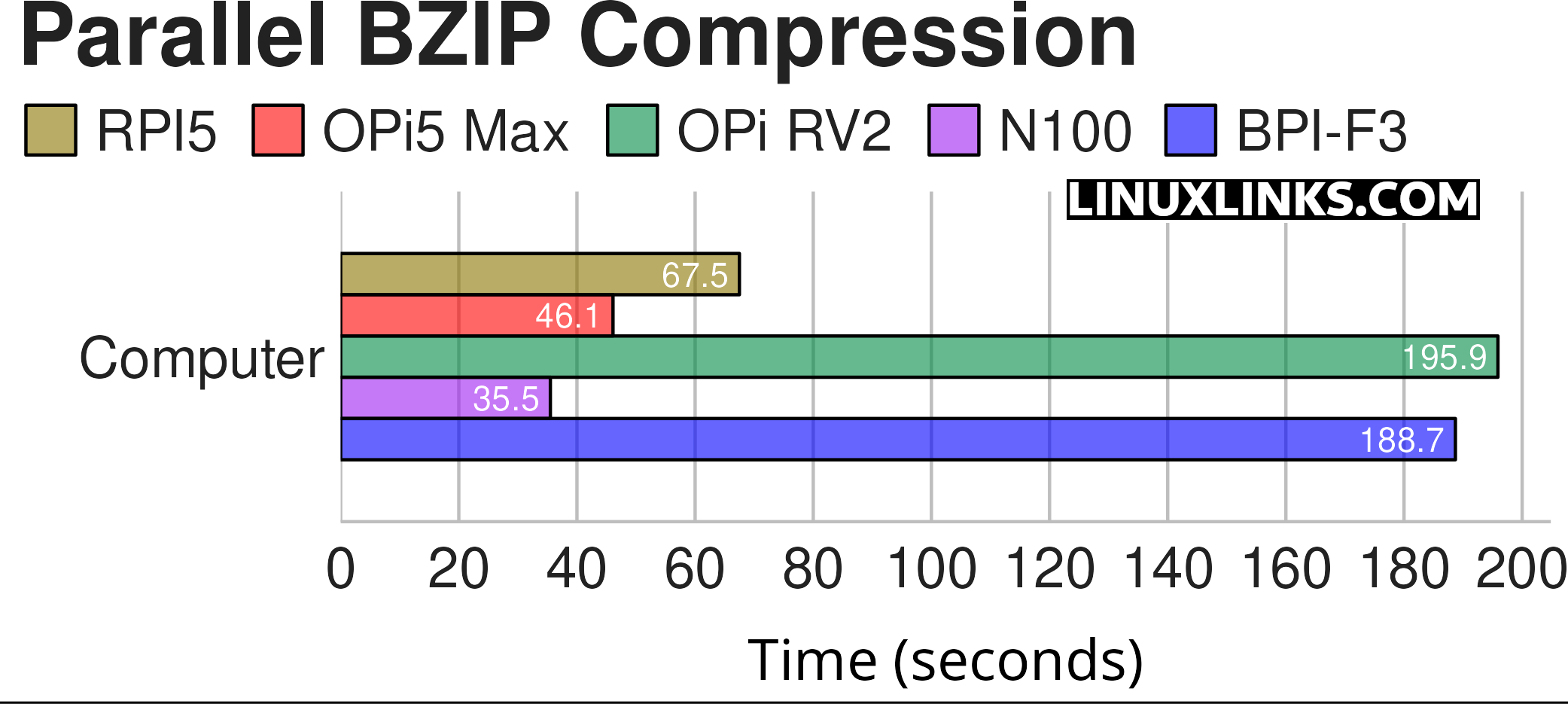
$ phoronix-test-suite benchmark compress-pbzip2
This test measures the time needed to compress a file (a .tar package of the Linux kernel source code) using BZIP2 compression.
The N100 edges this benchmark although the Orange Pi 5 Max comfortably beat the Raspberry Pi 5 by a considerable margin. Both the RISC-V boards (BPI-F3 and RV2) both lag a long way behind in this benchmark with the BPI-F3 completing the benchmark slightly faster.
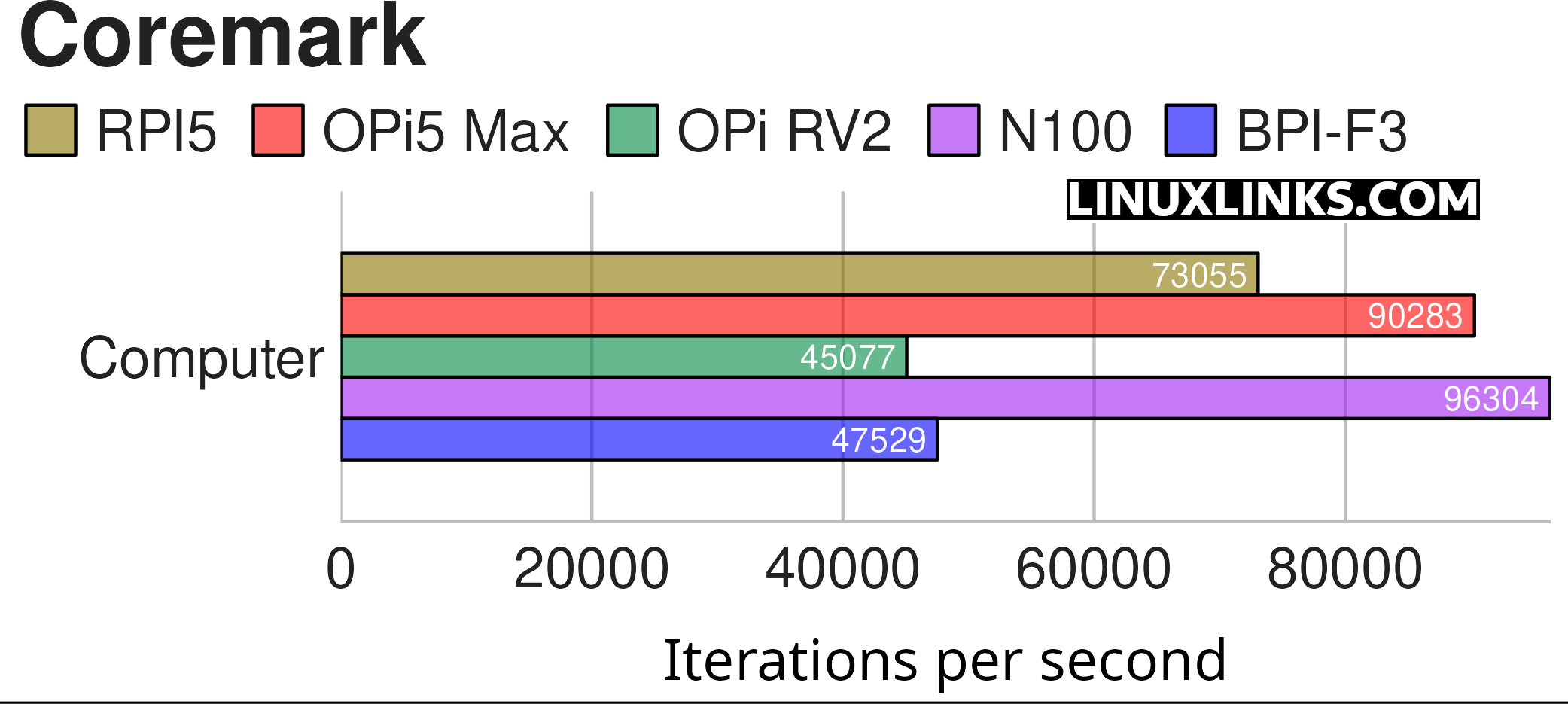
$ phoronix-test-suite benchmark coremark
Coremark is a benchmark that measures the performance of central processing units (CPU) used in embedded systems.
The Orange Pi 5 Max pushes the N100 extremely close, and is comfortably faster than the Raspberry Pi 5. Again the two RISC-V boards complete the test slower but again the Banana Pi BPI-F3 has the edge on the Orange PI RV2.
I forgot to include a few details in my previous article, so I’ll take the opportunity to cover them now.
Let’s test OpenGL ES with glmark2-es2-wayland on the Banana Pi.
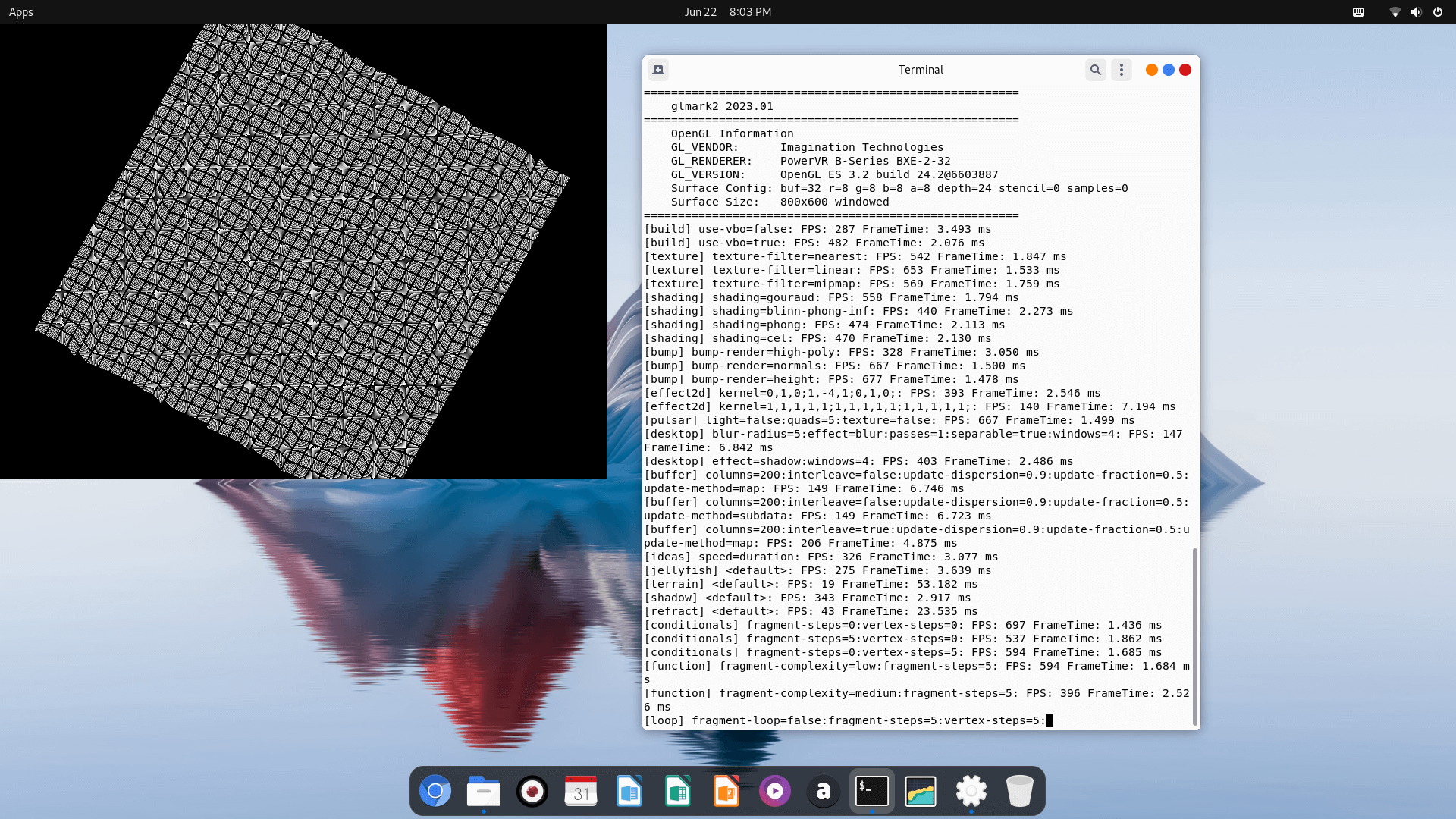
Here’s details of the GPU acceleration available in Chromium:
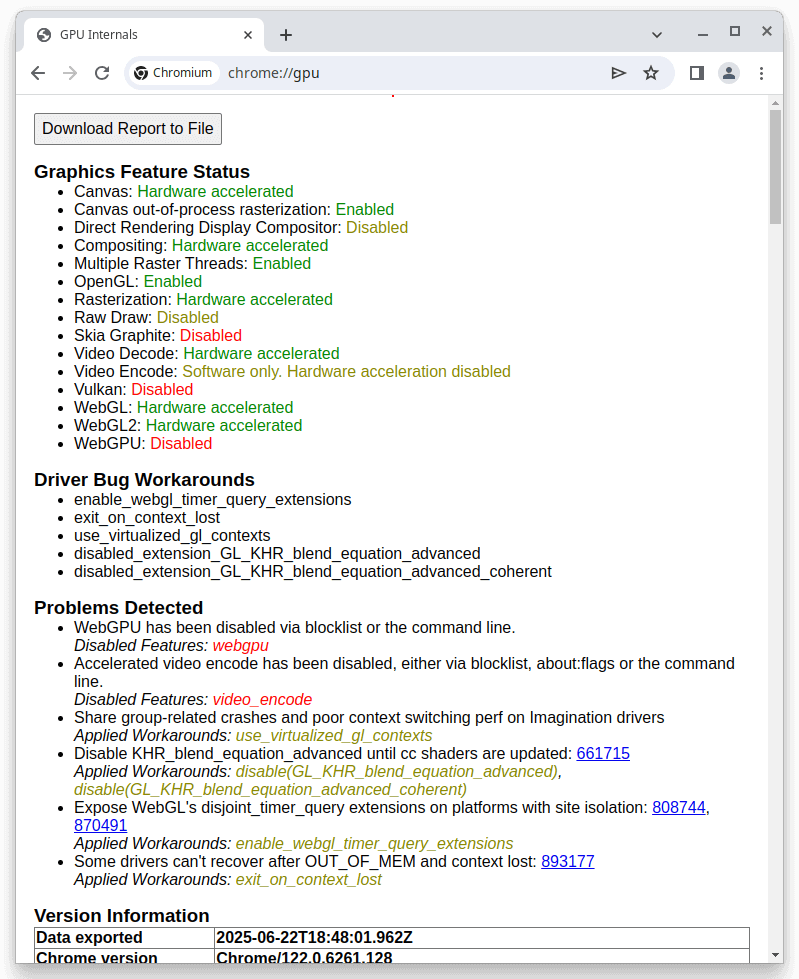
In the next article in the series, I’ll run some power consumption tests.
All articles in the series:
| Banana Pi BPI-F3 | |
|---|---|
| Introduction | Introduction to the series and interrogation of the Banana Pi BPI-F3 |
| Benchmarks | Benchmarking the Banana Pi BPI-F3 Single Board Computer |
| Power Consumption | When idling, general desktop usage, and stressed. |
